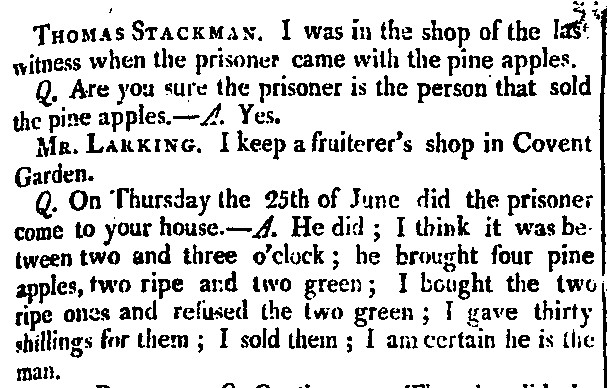
First blog post, but I have to start somewhere!
Why is this blog called Rent-A-Pineapple? In Regency and Georgian times, pineapples were so rare that people didn’t actually eat them; they displayed them. A matron wanting renown for her parties would rent a pineapple and have it be displayed in pride of place as the centerpiece on her dinner table for all her guests to see. It was the ultimate in conspicuous consumption at a time when displaying what you had in terms of the silver plate, the number of dishes served, the height of your footmen serving those dishes, and the centerpiece on the table all being paramount to one’s status.
Pineapples originally came from South America and were brought to the Caribbean and Central America. Christopher Columbus brought back some from his second voyage, but it wasn’t until a Dutchman, Pieter de la Court developed greenhouse horticulture in the 17th century that they could be grown in Europe. Before that, anyone wanting the sweet fruit had to wait for it to be imported from South America, a journey of two to four months.
The first one grown in England was in 1723 in Dorney Court. The fruit proved difficult to cultivate and became almost the exclusive hobby of the aristocrat. Hothouses or pine-houses were not cheap to build at a cost of £150 in the mid-1700s, an equivalent of £28,000 in today’s money. This produced an expensive product as the hothouse had to be heated because the fruit was more sensitive and fussy than citrus plants to grow, requiring warmer air and more sunshine than oranges and lemons. A pineapple might sell for £60, for that sum, you could hire ten maids in the 18th century.
The exclusivity of the fruit and the crown on top helped it to earn the nickname ‘King Pine.’ Services sprung up that would rent the elusive fruit as merchants opened pineapple rental shops to cater to the middle class. This, of course, led to thieves stealing the precious fruit. In a case from 1807, John Godding, alias Godwyn, stole seven pineapples from the hothouse of Sackville Stephen Bale. He was found guilty and transported for seven years.

If you were a hostess who couldn’t afford the rental of a pineapple to grace your dinner table, then you might afford pineapple-inspired art. In the 19th century, pineapples were found everywhere, in paintings, architecture, and on dinnerware. The coveted fruit even became a meme of the time. ‘A pineapple of the finest flavor’ was a phrase that meant the best of the best. The writer, Richard Sheridan, had a character state “he is the very pineapple of politeness,” in his 1775 play The Rivals.
By the Victorian era, the cultivation in hothouses had improved and the invention of the steamship brought the fruit from the colonies and its exclusivity began to fade.
Bibliography
https://www.historic-uk.com/CultureUK/King-Pineapple/
https://theweek.com/articles/785763/how-pineapples-became-status-symbol#